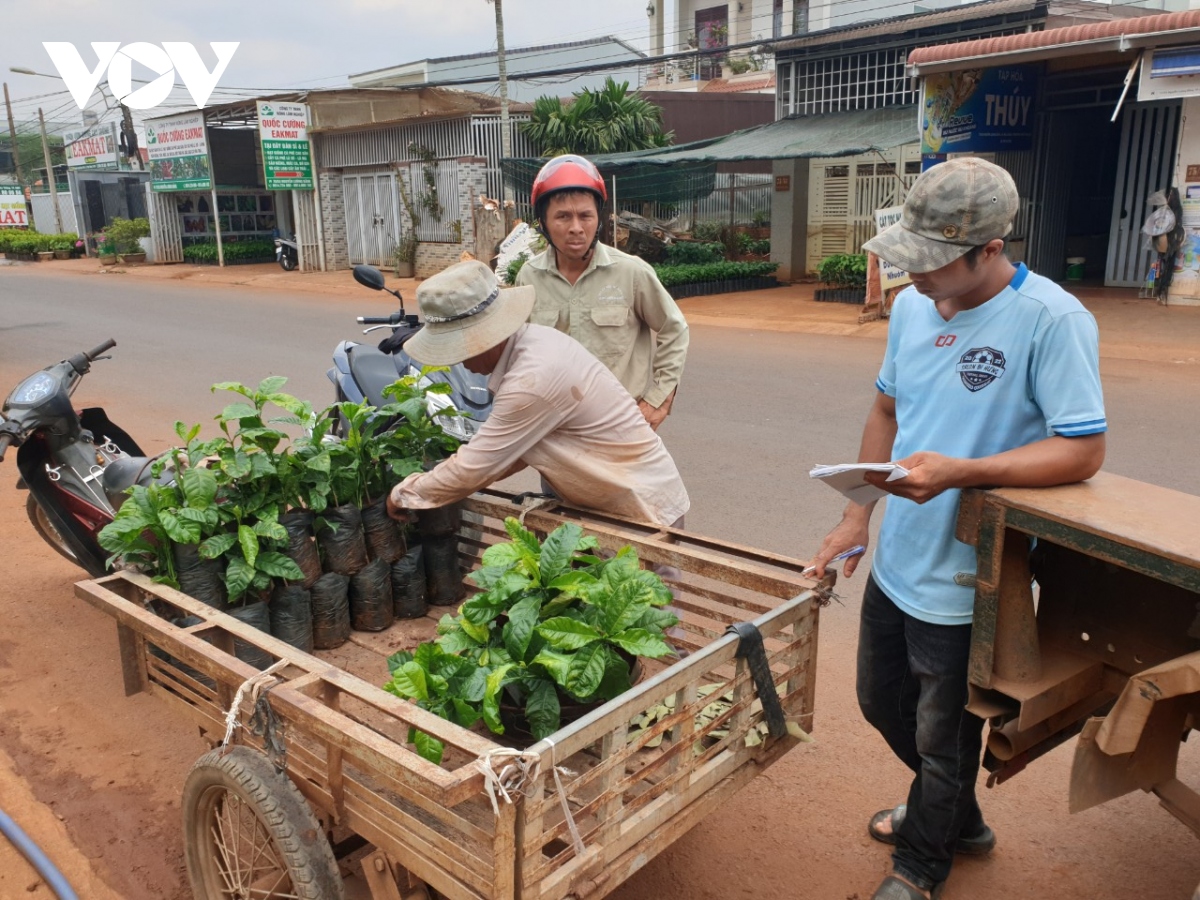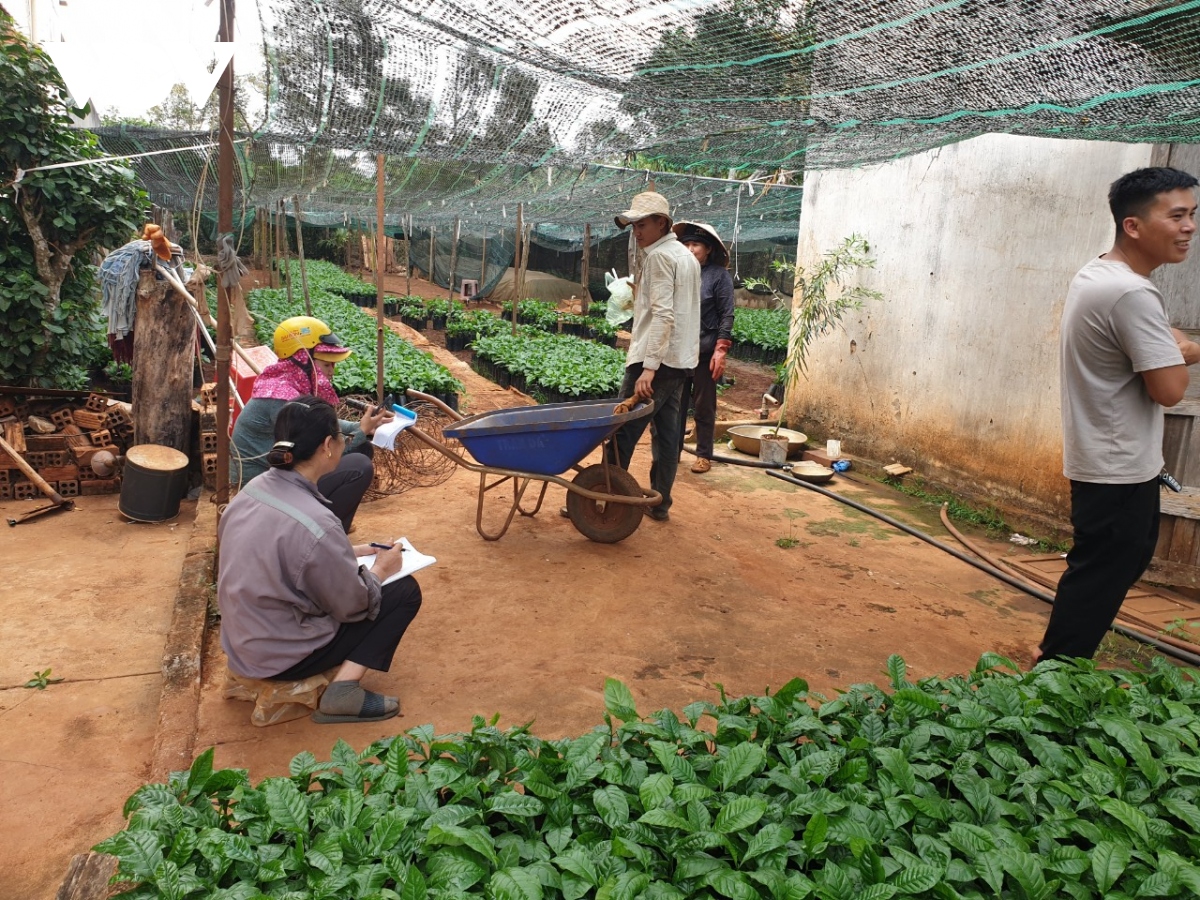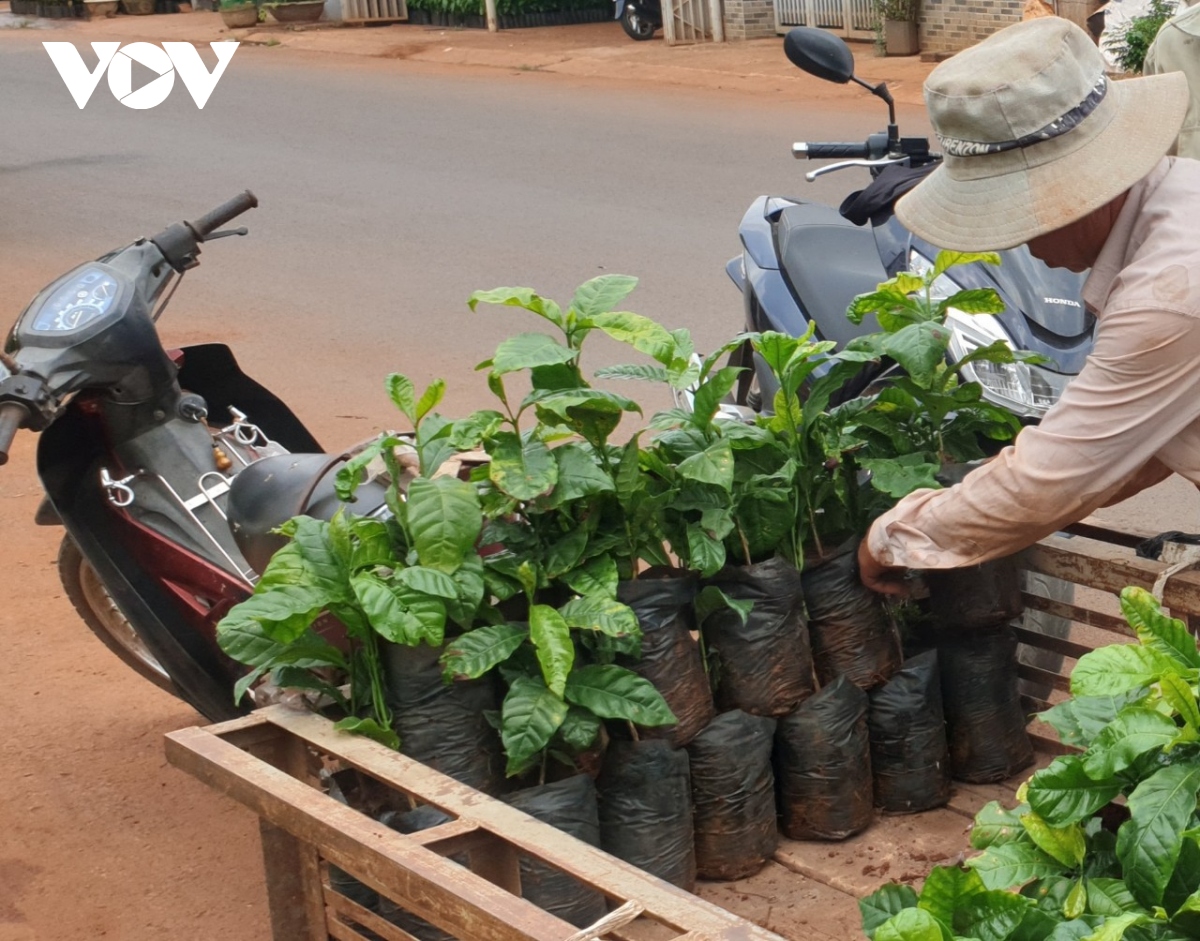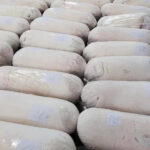In the midst of the scorching dry season, when streams and lakes are dry, coffee traders continue to scour nurseries to buy seedlings, hoping to cash in when the coffee planting season begins with the arrival of the rains. Whether or not Vietnam’s coffee industry will face a surplus in acreage and production remains a question for the future, but concerns about the quality of seedlings are already surfacing.
Despite the absence of significant rainfall for nearly half a year, Mr. Nguyen Quang Thao, a resident of Village 10, Ea Hiu Commune, Cu Kuin District, Dak Lak Province, has taken advantage of the situation to purchase over a hundred coffee seedlings to replace his failed pepper plantation.

Mr. Nguyen Quang Thao (red hat) takes advantage of the opportunity to buy coffee seedlings
Mr. Thao explained that during the peak of the dry season, few people would normally plant trees or sow seeds. However, this year’s unprecedented coffee prices have led to a scarcity of seedlings. With grafted coffee plants already sold out by nurseries, Mr. Thao has resorted to purchasing seedlings grown from seeds. He sighs as he acknowledges the start of a new cycle of coffee planting, but he accepts it, recognizing that coffee remains the most suitable crop for his land.
“Previously, I only grew pepper here. For the past two or three years, I’ve been growing durian. Now, like this year, we’re starting to transition to coffee… The race to plant has begun. Right now, all that’s being planted here is coffee. As for fruit trees, I’m not sure,” said Mr. Thao.
In Village 11, Hoa Thang Commune, Buon Ma Thuot City, the center of plant nurseries in Dak Lak Province, the atmosphere is busier than usual with the purchase and sale of trees.

A coffee nursery in Village 11, Hoa Thang Commune. Three traders surround the nursery owner (in white shirt)
Ms. Le Thi Van, a nursery owner in the village, revealed that some nurseries had sold out their entire stock nearly two months ago to traders from Gia Lai, Dak Nong, and Lam Dong, even when the plants were still very young. Currently, the price of seedlings continues to rise daily, but farmers are unable to buy directly as traders have already secured all available stock.
Ms. Van refers to her wholesale buyers as “these guys,” as they have become well-acquainted over time.
“As for my nursery, we’re out of seedlings. No local farmers are buying them. All the plants have been bought by these traders. They’ve been visiting every nursery. Overall, the price of seedlings is increasing daily. A few days ago, they wouldn’t buy them for 4,300 VND, but now they’re fighting over them at 4,500 VND,” said Ms. Van.

Coffee seedlings have been in high demand since mid-March, when they were still very young.
According to the Western Highlands Institute of Agricultural Science and Technology, coffee prices have reached an all-time high, with the price for May 2024 delivery at $4,224 per ton, significantly higher than the $3,150 per ton achieved in June 1994. As a result, the rush to plant coffee is almost inevitable.

Most seedlings sold do not have labels as required by regulations, raising concerns about their quality
Dr. Tran Vinh, the institute’s director, believes that the current wave of planting is unlikely to lead to a surplus in production or a price crisis because the area and production of coffee in the Western Highlands have been declining in recent years as farmers have switched to durian and other fruit trees. However, the shortage of coffee seedlings in the market has raised serious concerns about their quality.
“This situation is extremely worrying because many outsiders are taking advantage of the high coffee prices. Some facilities are sourcing seedlings from other places rather than producing them locally. The seeds produced here, such as those purchased from the Institute, will not be available for sale until at least May. But now, in March and April, they are already available, which means they must have been brought in from somewhere else and then grown and sold here. And it’s impossible to tell the quality of a coffee seedling just by looking at it,” emphasized Dr. Tran Vinh.












